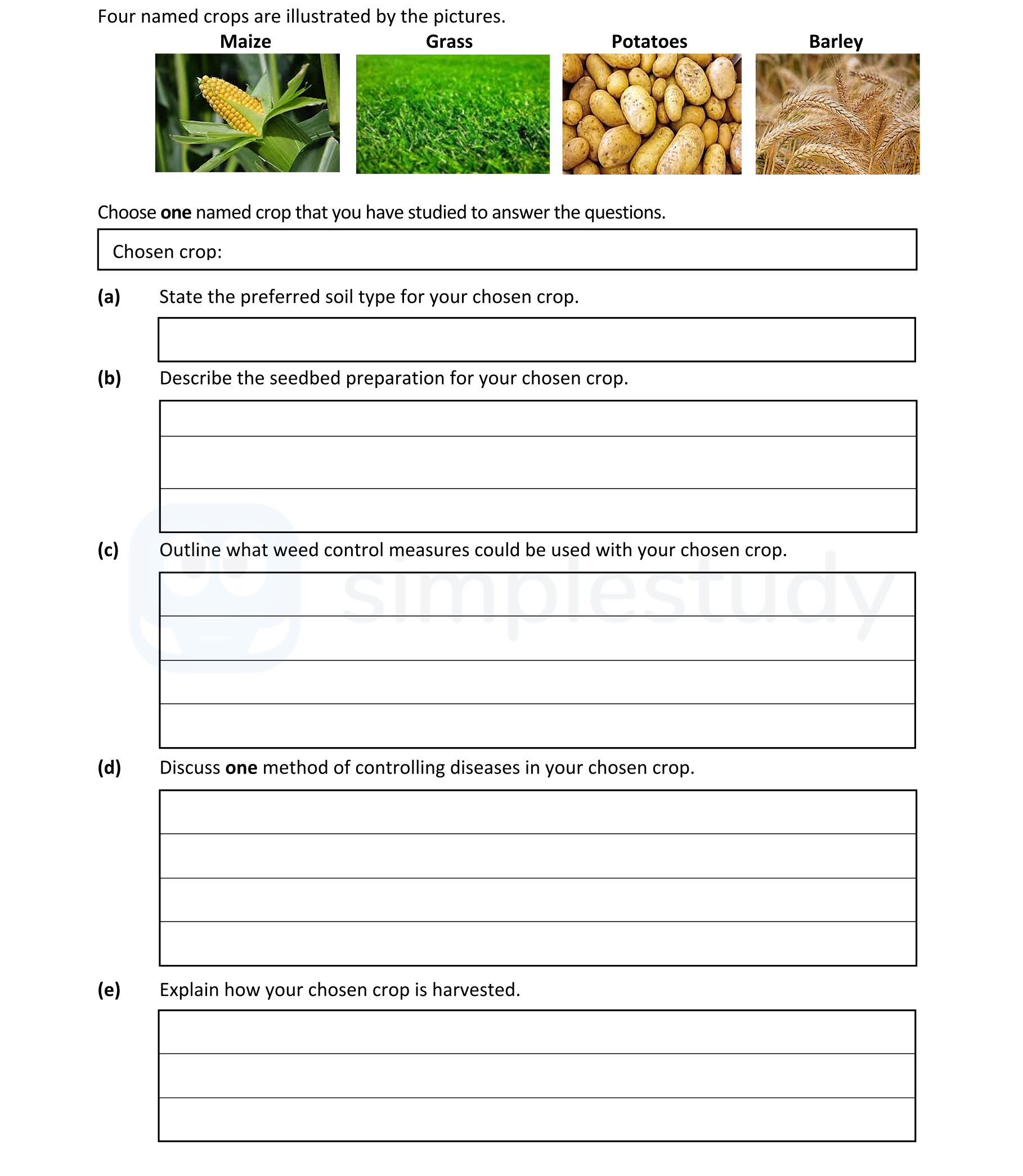Photo AI
Choose one named crop that you have studied to answer the questions - Leaving Cert Agricultural Science - Question Choose one named crop that you have studied to answer the questions. - 2020
Question Choose one named crop that you have studied to answer the questions.

Choose one named crop that you have studied to answer the questions. **Chosen crop:** Potatoes (a) State the preferred soil type for your chosen crop. (b) Describ... show full transcript
Worked Solution & Example Answer:Choose one named crop that you have studied to answer the questions - Leaving Cert Agricultural Science - Question Choose one named crop that you have studied to answer the questions. - 2020
Step 1
(a) State the preferred soil type for your chosen crop.
Answer
The preferred soil type for potatoes is well-drained, loamy soil. This soil retains moisture and nutrients but allows excess water to drain, preventing root rot and diseases. Ideally, the pH level should be between 5.8 and 6.5.
Step 2
(b) Describe the seedbed preparation for your chosen crop.
Answer
Seedbed preparation for potatoes involves several key steps:
- Tilling: The soil should be tilled to a depth of 10-12 inches to aerate it and improve drainage.
- Removal of Debris: Any stones, weeds, or previous crop residues should be removed to create a clean environment.
- Soil Leveling: Rake the soil to level the surface and improve seed placement.
- Fertilization: Incorporate organic matter or fertilizer to enrich the soil before planting.
Step 3
(c) Outline what weed control measures could be used with your chosen crop.
Answer
Weed control measures for potatoes may include:
- Mulching: Applying a layer of straw or plastic mulch to suppress weed growth.
- Mechanical Weeding: Using hoeing or cultivators to physically remove weeds.
- Chemical Herbicides: Applying selective herbicides that target specific weeds without harming the potatoes. Timing is critical to maximize effectiveness.
Step 4
(d) Discuss one method of controlling diseases in your chosen crop.
Answer
One effective method of controlling diseases in potatoes is crop rotation. By rotating potatoes with non-solanaceous crops (like grains), the life cycle of pathogens specific to potatoes is disrupted, reducing the incidence of diseases such as blight. Additionally, it helps maintain soil health and fertility.
Step 5
(e) Explain how your chosen crop is harvested.
Answer
Potatoes are harvested typically 2-3 weeks after the foliage has died back, indicating that the tubers are mature. The harvesting process involves:
- Using a Potato Harvester: Machines or manual digging tools are utilized to lift the tubers from the soil.
- Handling: Care must be taken to prevent bruising during collection.
- Sorting and Storing: Once harvested, potatoes are sorted based on size and quality, then stored in a cool, dark, and dry place to enhance shelf life.
